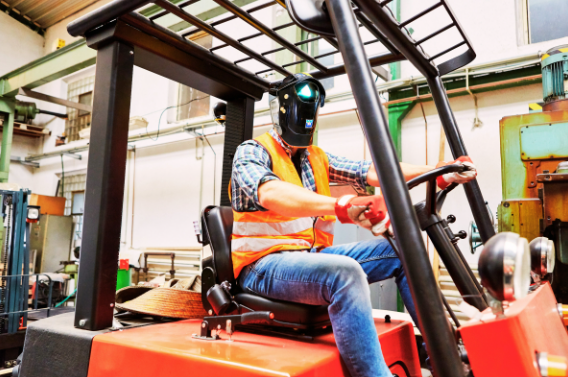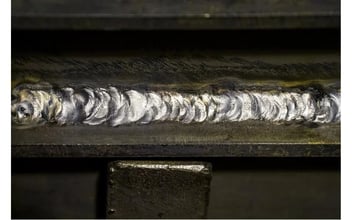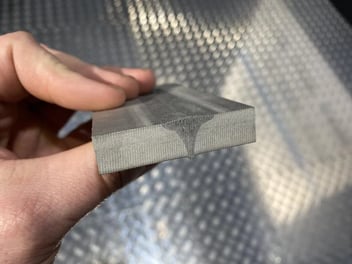The Welding Supervisor Model: Enhancing Efficiency and Quality in Welding
Discover how the welding supervisor model can boost efficiency and quality in welding, and the benefits of upskilling technical workers with K-TIG technology.

Introduction: The challenges of reduced productivity and labor shortage in welding workshops
Welding workshops face numerous challenges in maintaining productivity levels, especially in the current labor-short environment. The shortage of qualified and coded welders has led to a strain on the available workforce, resulting in reduced productivity. As a result, workshops have been forced to assign qualified welders to perform other tasks apart from welding, further impacting the overall output of the workshop.
This reduction in productivity has significant implications for fabrication shops. The time and effort spent on non-welding tasks take away from the core competency of the welders, leading to delays in project completion and potentially compromising the quality of the welding work. Therefore, it is essential to find a solution that allows workshops to increase their workforce and output without solely relying on qualified welders.
The impacts of qualified welders doing other jobs on productivity
When qualified welders are assigned to perform tasks other than welding, the productivity of the workshop is significantly affected. While these welders may possess the necessary skills and expertise in welding, their efficiency is compromised when they are engaged in non-welding activities. This diversion of their skills and expertise leads to a decrease in welding output and a potential decline in the quality of the welds.
Furthermore, the increased workload on qualified welders can result in fatigue and burnout, further impacting their productivity. Given the shortage of qualified welders in the industry, it is crucial to find alternative ways to meet the demands of fabrication shops without overburdening the existing workforce.
The benefits of upskilling technical competent workers with K-TIG technology
One solution to address the reduced productivity in welding workshops is to upskill technical competent workers with K-TIG technology. K-TIG is an advanced welding technology that enables faster and more efficient welding processes. By providing technical workers with the necessary training and certification in using K-TIG, fabrication shops can expand their workforce beyond qualified welders.
Upskilling technical competent workers with K-TIG technology offers several benefits. Firstly, it allows the workshop to increase its welding capacity without solely relying on qualified welders, as technical workers can now perform welding tasks with the help of K-TIG. This increases the overall output of the workshop and ensures that qualified welders can focus on more complex welding projects.
Secondly, K-TIG technology improves operational efficiencies by increasing the arc on time during welding. This results in faster welding processes and reduces the time spent on each project, ultimately leading to improved productivity. The increased efficiency also allows for better resource allocation and planning, ensuring that projects are completed within the scheduled timelines.
Moreover, upskilling technical workers with K-TIG technology enhances the competitiveness of fabrication shops. By adopting this advanced welding technology, workshops can deliver high-quality welds in a shorter timeframe, making them more profitable and competitive in the market. Additionally, the upskilling of technical workers promotes a culture of continuous learning and development, contributing to the overall growth of the workforce.
The role of the welding supervisor model in increasing workforce and output
To meet future demands and overcome the labor shortage, fabrication shops need to rethink how they use and acquire labor. One effective approach is the adoption of the welding supervisor model. In this model, qualified welders take on the role of supervisors, overseeing and coordinating the welding activities performed by upskilled technical workers using K-TIG technology.
By implementing the welding supervisor model, fabrication shops can effectively increase their workforce and output. Qualified welders can leverage their expertise to ensure the quality and compliance of the welding work, while technical workers proficient in K-TIG technology handle the actual welding tasks. This division of labor optimizes efficiency and productivity, allowing the workshop to take on more projects and meet the growing demands.
The welding supervisor model also fosters a collaborative work environment, where the knowledge and skills of qualified welders are shared with the upskilled technical workers. This transfer of expertise promotes skill development and helps bridge the gap between technical competence and welding proficiency. Additionally, the presence of welding supervisors ensures that the welding processes are executed according to industry standards and best practices, further enhancing the quality of the welds.
Rethinking labor acquisition and utilization for future demands
Given the challenges posed by reduced productivity and labor shortage, it is essential for fabrication shops to rethink their labor acquisition and utilization strategies. Simply relying on qualified welders is no longer sustainable or feasible. Instead, workshops should embrace the use of technologies like K-TIG to increase arc on time and improve operational efficiencies.
By upskilling technical competent workers with K-TIG technology, fabrication shops can build a more diverse and capable workforce. This approach not only increases the welding capacity but also reduces the strain on qualified welders, allowing them to focus on more critical aspects of welding projects. Furthermore, the adoption of the welding supervisor model ensures that the welding processes are effectively managed and supervised, maintaining the desired levels of efficiency and quality.
Looking forward, the welding industry must actively promote the upskilling of technical workers and the adoption of advanced welding technologies. By doing so, fabrication shops can meet future demands, remain profitable, and stay competitive in an increasingly challenging market.
Conclusion: Embracing the welding supervisor model for enhanced efficiency and quality in welding
In conclusion, the welding supervisor model offers a viable solution to the challenges of reduced productivity and labor shortage in welding workshops. By upskilling technical competent workers with K-TIG technology and adopting the welding supervisor model, fabrication shops can increase their workforce and output without solely relying on qualified welders.
The benefits of this approach are multifaceted. It improves operational efficiencies, enhances productivity, and ensures the quality of welds. Additionally, it promotes a culture of continuous learning and development, contributing to the growth of the workforce.
To meet future demands and remain competitive, it is crucial for fabrication shops to rethink their labor acquisition and utilization strategies. Embracing the welding supervisor model and leveraging technologies like K-TIG can lead to more profitable and competitive businesses in the welding industry.




